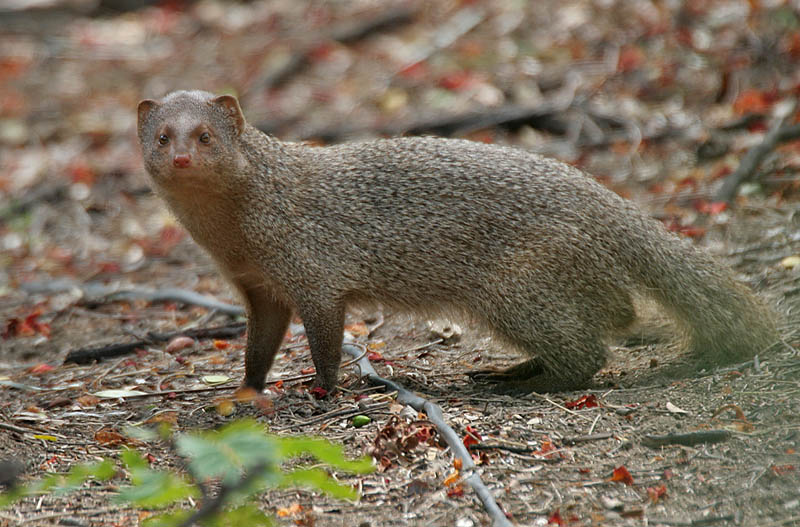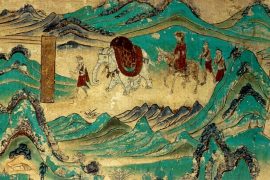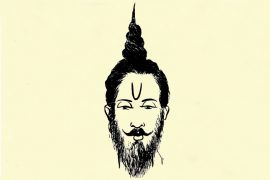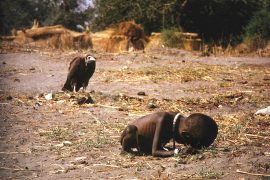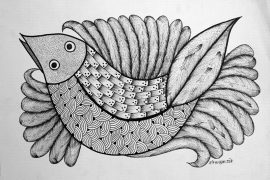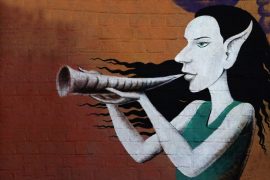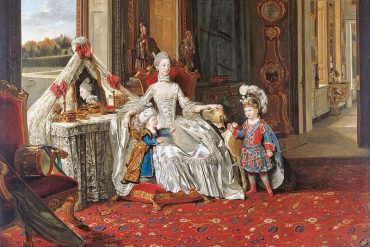He was a mongoose, rather like a little cat in his fur and his tail, but quite like a weasel in his head and his habits. His eyes and the end of his restless nose were pink; he could scratch himself anywhere he pleased, with any leg, front or back, that he chose to use; he could fluff up his tail till it looked like a bottle-brush, and his war-cry, as he scuttled through the long grass, was: Rikk-tikk-tikki-tikki-tchk!
Rudyard Kipling’s description of Rikki-tikki-tavi, the mongoose, holds as much charm as the creature itself. However, today, Kipling’s hero faces a crisis that is far more dangerous than Nag (his serpentine nemesis in the story).
In the world of art, there is a quest for perfection. And that quest is leading to the murder of thousands of India’s Mongooses. “It is a very old tradition to use mongoose brushes,” said painter Sanatan Dinda in a conversation with PTI. “Nowadays the awareness for conservation has increased but lot of artists still insist on using it because it is soft and absorbs colour very well.”
Maksud Ali Mondal, a young artist based in Santiniketan, told Mongabay, “I know for a fact that these brushes are still available here and that many artists use it. I personally think it’s a big issue and have stopped using any products that harm other animals, but many artists have sadly not done the same.”
To meet this bustling demand for mongoose fur, an elaborate and bloody supply chain has grown despite the legal ban put in place in 1972.
The Wildlife Protection Act of 1972 prohibits hunting, buying or selling of mongoose or any part of the animal. The punishment for the activity amounts to a minimum sentence of three and a hefty fine of ten thousand rupees. International trade of Indian mongooses is also banned under the Convention on International Trade in Endangered Species of Wild Fauna and Flora or CITES.
Yet, the demand for these brushes has sustained a thriving national and international black market. According to extensive research undertaken by the Wildlife Trust of India, it was found that in the early 2000s, an estimated fifty thousand mongooses were killed annually. While current figures are uncertain, the market for these brushes is very much in business, and the web runs wide.
The town of Sherkot in Uttar Pradesh––nicknamed the brush-producing capital of India––has been the centre of most raids relating to the trade of mongoose hair. However, supply chains have been found all over the country from Uttarakhand, Rajasthan and West Bengal to Maharashtra, Kerala, Karnataka and Tamil Nadu.
Jose Louies, the chief of Wildlife crime control at the WTI, who has been actively assisting the government in navigating the annals of this trade, said:
When I have spoken to informants and people who are involved in this business, they say it has been going on for many decades now. It is easy for the hunters of mongoose to catch them, consume the meat and then sell their hair for profit. Also, this is a highly profitable trade, brushes made of mongoose hair costs five times more than other brushes.
The process may be gruesome, but business is booming. A kilogram of this fine hair is worth a hundred thousand rupees, and India trades in roughly a hundred and fifty kilograms of the same per month, which translates to 100,000 mongooses being slaughtered every year.
Jose observes that the international market for the brushes fuels its production. The hair is smuggled to the United States, Europe and the Middle East, and smugglers also use the India-Nepal and India-Bangladesh trade routes.
Many a time, the brushes are disguised as sable or badger paintbrushes, which make them legal. The sale is possible as the majority of the buyers are unaware of the inhumane production process. Louies said:
It is supplied in many art colleges in India. In Delhi University, I have seen it being used by students. They do not know that the paintbrush they are using is from mongoose.
The Indian postal service has also become an unwitting accomplice to trade, as these brushes are often shipped using courier companies. But fortunately, the government’s crackdown on this illegal trade has been brutal.
On October 24, 2019, 200 officials and police personnel raided the town of Sherkot. This was one of the many raids undertaken that very day across six Indian states as a part of Operation Clean Art.
This operation had been planned for over two months by the Wildlife Crime Control Bureau (WCCB) along with the Central Bureau of Investigation (CBI), State police and forest departments. It resulted in the seizure of 113 kilograms of mongoose hair, over fifty thousand paintbrushes and the arrest of forty-nine individuals.
Describing the trade as ‘organised crime’, V. Girisha, Regional Deputy Director, Wildlife Crime Control Bureau (WCCB), said, “Operation Clean Art was the first pan-India operation to crackdown on the smuggling of mongoose hair in the country.”
While the raids form an integral part of the operation, WCCB is looking to reduce the demand for these brushes and provide viable alternatives to the indigenous communities dependent on the business. But the allure of the brushes makes this process difficult.
C.P. Krishnapriya, an artist based in Chennai, says, “The reason many artists use these brushes is because, in watercolour, you can’t really afford to make any mistakes. Therefore, the brush needs to be extremely good. Many artists feel the mongoose hair brushes can hold a stroke well, and they are also extremely durable.”
Simultaneously, many brands have tried “proprietary mixes of natural hairs” to produce a similar effect as mongoose hair, while others have developed synthetic varieties. However, artists are divided on their effectiveness. Many argue that the synthetic bristles do not hold the tapered shape of the mongoose hair, while others have defended the synthetic brushes, saying that they are more than comparable to the natural ones.
However, the alternatives fall short of replacing the real mongoose hairbrushes, and the trade continues, as it is often cheaper for traders to get illegal raw materials than to invest in a sustainable alternative.
The price is paid by the Mongooses of India. The often-overlooked ferret-faced bottle-tailed hunter of serpents. Of the creature, Louies says,
We won’t notice its disappearance because who really looks at mongoose, but one day they would suddenly just not be there.
-30-
Copyright©Madras Courier, All Rights Reserved. You may share using our article tools. Please don't cut articles from madrascourier.com and redistribute by email, post to the web, mobile phone or social media.Please send in your feed back and comments to editor@madrascourier.com

